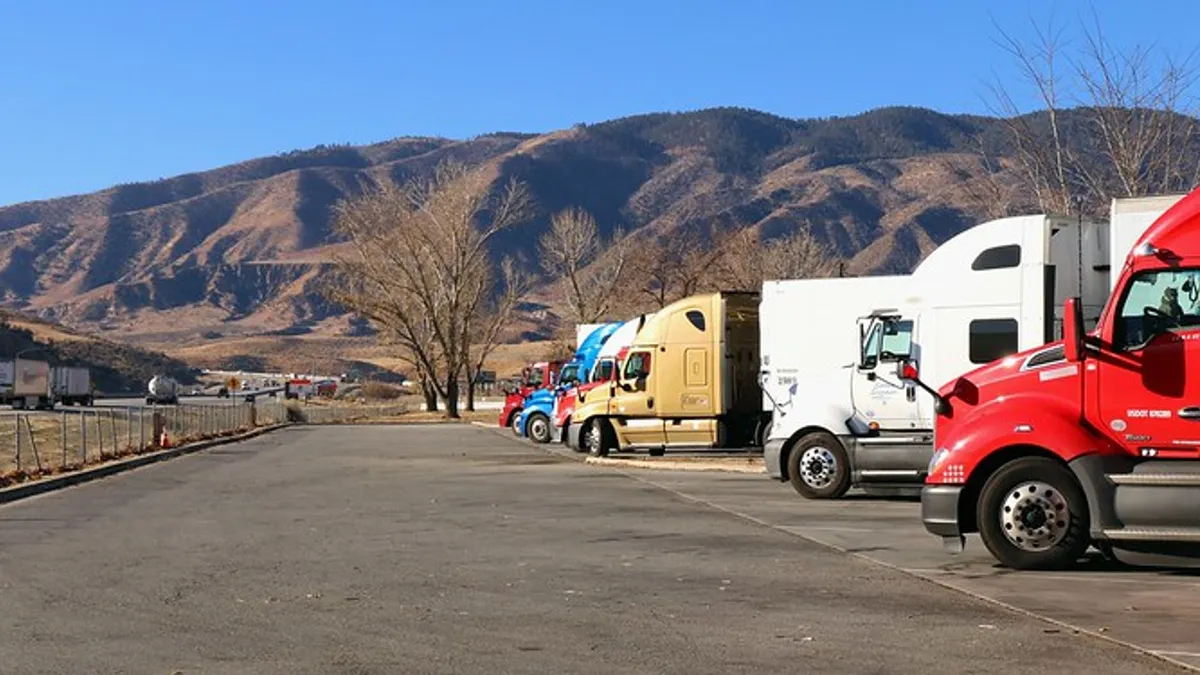Dive Brief:
- Waste and wastewater fleets secured a delayed timeline to transition to zero-emission vehicles in California's newly adopted Advanced Clean Fleets rule. The rule was passed by the California Air Resources Board on Friday.
- Under the agreed-upon timeline, waste haulers would need to purchase 100% zero-emission vehicles by 2042, six years later than the standard pathway.
- The rule needs a waiver from the U.S. EPA, which the federal agency previously granted for the similar Advanced Clean Trucks rule. While Friday’s rule focuses on consumers, the Advanced Clean Trucks rule focused on manufacturers.
Dive Insight:
While haulers have begun pilot programs for electric refuse trucks, CARB acknowledged that compressed natural gas trucks were an acceptable intermediate step for waste fleets before widespread adoption of the new technology.
The vote allows the state to press forward on plans to end combustion engine truck sales by 2036 and fully transition the state’s fleet to zero-emission vehicles by 2045. CARB also says the rule would generate $26.6 billion in health savings from reduced incidents of asthma and other respiratory illnesses.
“We have the technology available to start working toward a zero-emission future now,” CARB Chair Liane Randolph said in a statement. “The Advanced Clean Fleets rule is a reasonable and innovative approach to clean up the vehicles on our roads and ensure that Californians have the clean air that they want and deserve.”
Trucks account for 6% of California’s vehicles but 25% of its on-road greenhouse gas emissions and 35% of its transportation-related nitrogen oxide emissions, according to CARB. The rules were supported by grassroots and environmental groups who advocated for communities affected by truck-related pollution.
In addition to the delayed timeline for implementation, the board also adopted more explicit language directing CARB staff to coordinate with other state agencies over the implementation of two laws (SB 1383 and SB 1440) that include local RNG procurement requirements. Staff must provide a report on how the Advanced Clean Fleets rule can coexist with the laws no later than end of 2025.
In comments on a draft version of the rule, representatives of the waste industry had urged CARB to take into account the investments haulers had made into CNG fleets, viewed as cleaner than diesel fleets, when coming up with a more delayed timeline.
SB 1440 directs the California Public Utilities Commission to find beneficial uses for renewable natural gas consistent with the state’s waste organic waste reduction targets. Major waste companies like WM have been collecting landfill gas and converting it to RNG as they grow their fleets of CNG-fueled refuse haulers.
On Friday, Air Resources Board member Bill Quirk said the new rule should be explicit about the need for CARB to coordinate with other state agencies on markets for biomethane as the Advanced Clean Fleets rule begins to remove truck fleets as an end market for the refined landfill gas.
“When we produce this methane, whether it be at sewage treatment plants or methane produced at landfills, we do need a place to put it,” Quirk said Friday.
CARB is scheduled to meet to discuss the rule in full again in 2028.















